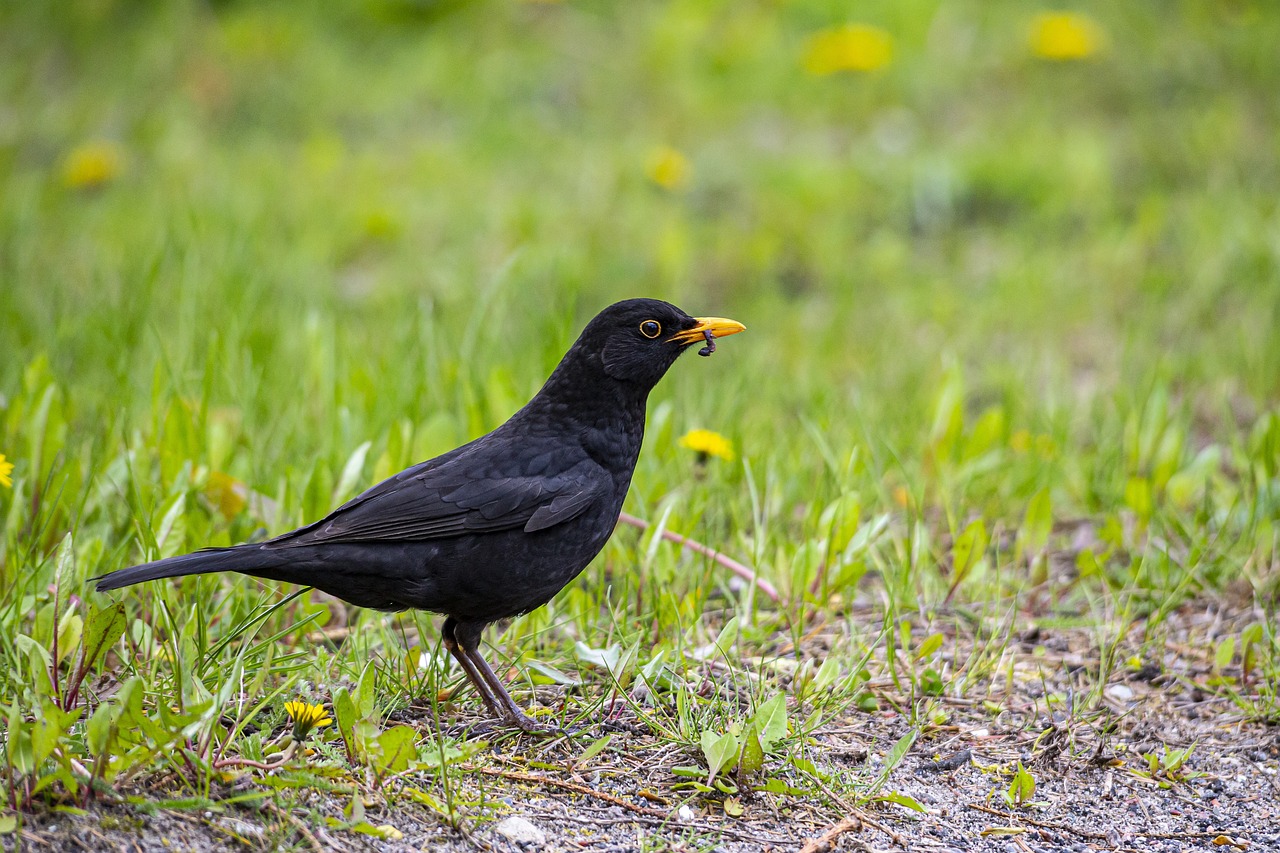The term “Blackbird” commonly refers to the Eurasian Blackbird, scientifically known as Turdus merula. This bird is a member of the thrush family, Turdidae. Here are some key features and characteristics of the Eurasian Blackbird:
- Appearance:
- Size: The Eurasian Blackbird is medium-sized, measuring about 23.5 to 29 centimeters (9.25 to 11.4 inches) in length, with a wingspan of 34 to 38 centimeters (13.4 to 15 inches).
- Color: Males are entirely black with a bright yellow-orange beak and eye-ring, while females and juveniles are generally brown with a slightly lighter throat and breast, and a darker mottling or streaking.
- Bill: The male’s bright yellow-orange bill is a distinctive feature, especially during the breeding season. Females have a more subdued brownish bill.
- Habitat:
- The Eurasian Blackbird inhabits a wide range of environments including forests, woodlands, gardens, parks, and urban areas.
- They are adaptable birds and are often seen in both rural and urban settings.
- Distribution:
- This species is widespread across Europe, North Africa, and parts of Asia. It has also been introduced to Australia and New Zealand.
- The Eurasian Blackbird is one of the most common and well-known birds in its range.
- Diet and Feeding Habits:
- The Eurasian Blackbird has an omnivorous diet that includes insects, earthworms, berries, and fruits.
- They forage on the ground, often seen hopping and flicking through leaf litter to uncover hidden prey.
- Behavior:
- Song: The male Eurasian Blackbird is known for its melodious and varied song, which it uses to establish territory and attract a mate. Their song is often heard at dawn and dusk.
- Territoriality: Males are highly territorial, especially during the breeding season. They will sing prominently from perches and engage in aggressive behavior to defend their territory from rivals.
- Breeding:
- Breeding season generally runs from March to July. During this time, males sing more frequently and defend their territories more aggressively.
- Females build cup-shaped nests using grass, leaves, and mud, usually in bushes or trees, but occasionally in unusual places such as buildings.
- The typical clutch consists of 3-5 eggs, which are bluish-green with reddish-brown spots. Both parents share in incubating the eggs and feeding the chicks once they hatch.
- Conservation Status:
- The Eurasian Blackbird is classified as Least Concern by the IUCN due to its large range and stable population.
- They are highly adaptable and thrive in a variety of habitats, including urban areas where they benefit from human-provided food sources.
- Cultural Significance:
- The Eurasian Blackbird is a familiar and beloved bird in many cultures. It features prominently in folklore, literature, and music.
- Its song is particularly cherished, and it is often regarded as a harbinger of spring.
In summary, the Eurasian Blackbird (Turdus merula) is a widespread and adaptable species known for its striking appearance, especially the males with their black plumage and yellow-orange beak. Their melodious song, adaptability to various habitats, and presence in urban and rural areas make them one of the most recognizable and appreciated birds in their range.
Visited 87 times, 22 visit(s) today
Views: 171
Subscribe to the newsletter:
